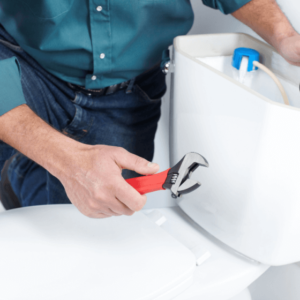If you have furniture in your house that needs some added character, “antiquing” is one way to go. Antiquing furniture is a DIY faux-painting technique that gives furniture an aged or antique appearance. Whether the piece is new or old, you can easily enhance your décor with unique beauty and personality. All it takes is a base coat of paint and some glaze. So find a dresser, table, cabinet, or anything else you want to have that vintage look and learn how to antique furniture
Step 1: Choose Your Glaze or Paint

Antiquing is usually done with darker, earth-toned glazes layered over a contrasting light-colored basecoat such as yellows, creams or beiges. But if you prefer the look of a lighter glaze, you can pair it with a dark basecoat instead as long as the two colors are contrasting.
When selecting paint, don’t forget about the finish. Use a flat finish for your basecoat. A porous finish absorbs glaze better than the satin or eggshell varieties. For your glaze mixture, use a satin finish in the contrasting color.
Step 2: Prepare Surfaces
Find a suitable workspace for your project. If you don’t have a workshop, try the garage with open windows and doors for air circulation. You can even work outside, weather permitting. Begin by removing all hardware with a screwdriver or another appropriate tool. Sand unfinished surfaces with medium-grit sandpaper until it is smooth, then clean with paint thinner or mineral spirits and allow them to dry. Paint the unfinished surfaces with a primer using a 2” or 4” paintbrush or mini-roller (depending upon the size of the object). Sand painted surfaces with a fine-grit sandpaper to remove any glossy areas. Then clean with water and all-purpose household cleaner. Rinse thoroughly and allow the surface to dry completely. Prime any bare surfaces. Remember to work on a drop cloth or tarp for easy cleanup.
Safety Alerts!
Keep all paints, chemicals and equipment away from children and pets.
Wear gloves to protect your hands and to make clean up easier.
Antiquing is not recommended for actual antique pieces you might own.
Step 3: Paint a Base Color
Pour a small amount of EasyCare® Ultra Premium Interior Paint into a mixing pot. Use either a 2″ or 4″ paintbrush or mini-roller (depending on the size of the object) to apply the basecoat. Allow the surface to dry for several hours or overnight.
Helpful Tip
If there isn’t much surface to cover, you can pour a small amount of paint into a clean coffee can, or even dip your brush directly into the paint can.
Step 4: Apply Glaze
Measure one cup of satin finish paint in the contrasting color and two cups of glaze into your mixing pot and stir. Now add water a little at a time, stirring well. You want a consistency that’s a little runny but still adheres to your brush.
Helpful Tips
The proper consistency of the glaze mixture is important—it has to be thin enough to allow the base coat to show through.
If you have a large area to cover, you can double or triple the amounts of the paint and glaze mixture. However, working with a small amount at a time is easier and creates less waste.
Brush the paint and glaze mixture on the surface, allowing it to collect in the cracks, crevices, and corners. Wait for the mixture to dry a bit—it will begin to dull in appearance. Dampen a piece of lint-free cloth with water and begin wiping off the mixture in long, even strokes, starting at the center and moving out towards the corners. As your cloth becomes too wet, replace it with a new one. You can remove as much or as little glaze as you wish, depending on the effect you’re trying to achieve. If you find you’ve removed too much, just apply more paint and glaze mixture and start again.

For different textures and effects, try using rolled-up plastic wrap, newspaper or cheesecloth to wipe off the glaze. Cheesecloth accentuates the wood grain, while crinkled newspaper and plastic wrap marble the surface. You can use a towel to create a scratched effect. Allow the surface to dry completely. When the glaze mixture has dried completely, proceed to applying a coat of polyurethane.
Helpful Tip
If you want to add even more of a distressed appearance, try wearing down the surface of the wood with sandpaper, shave sharp edges with a knife or poke wormholes into the surface with a nail.
Step 5: Apply Polyurethane
Use a high-quality brush or high-density foam mini-roller to apply a coat of water-based polyurethane to add extra shine and durability. Let the polyurethane dry completely before moving the piece to its rightful place in your home.
Step 6: Cleanup
Pick up your drop cloths or tarps and close up your paint cans. Dispose of used paint or empty cans appropriately. Clean your mixing pot and brushes with warm, soapy water.
Nice work! Without even setting foot inside an antique store, you’ve added vintage beauty to your home by antiquing your existing furniture and décor. Now sit back, relax and let the compliments come pouring in.

Project Shopping List
Here’s what you’ll need to complete this project successfully.
- Screwdriver
- All-purpose household cleaner
- Fine-grit sandpaper
- paint thinner or mineral spirits
- Wood primer
- 2″ or 4″ paintbrush
- Tarps or drop cloths
- Gloves
- EasyCare Ultra Premium Interior Paint
- Clear Glaze
- Mixing paint pot
- Lint-free cloth
- Plastic wrap or newspaper
- Cheesecloth
- Sandpaper
- Knife (optional)
- All-purpose household cleaner
- Towels (optional)
- Water-based polyurethane












